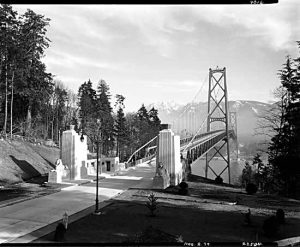45sharesLast month was the City of Vancouver’s 128th birthday, this weekend we celebrated the 40th anniversary of the Vancouver Whitecaps, and Science World is celebrating its 25th anniversary over the next few days. April and May have always been active months in the region, with projects taking off new doors opening, and of course the […]
Continue reading this post
1shareIt’s Emergency Preparedness Week in Vancouver (May 4 to May 10), which is part of a national campaign to encourage Canadians to get prepared for disasters. To spread the word, the City of Vancouver supplied the following information for me to share: Vancouver Emergency Preparedness Week Vancouver is in an earthquake zone–just two weeks ago, […]
Continue reading this post
355sharesWICKED, one of Broadway’s biggest blockbusters is coming to Vancouver and I have an exciting opportunity to offer to one lucky Miss604 reader. Back by popular demand! Variety calls WICKED “a cultural phenomenon” and it continues to break box office records across North America. Winner of over 50 major awards including a Grammy® and three […]
Continue reading this post
1shareFlirting with summer temperatures, May leads us into a sizzling season of fun in our community starting off with BC Youth Week, the re-opening of local farmers markets, art shows, concerts, and more. Photo credit: Philip on Flickr Jump to: Thursday, May 1st to Sunday, May 4th, 2014 Jump to: Monday, May 5th to Sunday, […]
Continue reading this post
91sharesThis year’s Vancity Member Day falls in the middle of Green Month at Science World, a month of exhibits highlighting sustainability activities in our community. Science World’s Green Month, which runs from Tuesday, April 22nd to Wednesday, May 21st, features exhibits and activities that celebrate environmental awareness and sustainability. For Green Month, Vancity is cowpowering […]
Continue reading this post

 Vancouver Canadians Promotional Schedule 2025
Vancouver Canadians Promotional Schedule 2025 Lapu Lapu Day Tragedy in Vancouver - Resources
Lapu Lapu Day Tragedy in Vancouver - Resources BC Youth Week Events 2025 For Youth by Youth
BC Youth Week Events 2025 For Youth by Youth